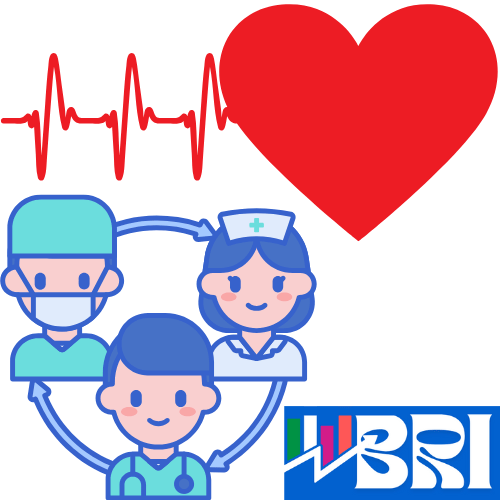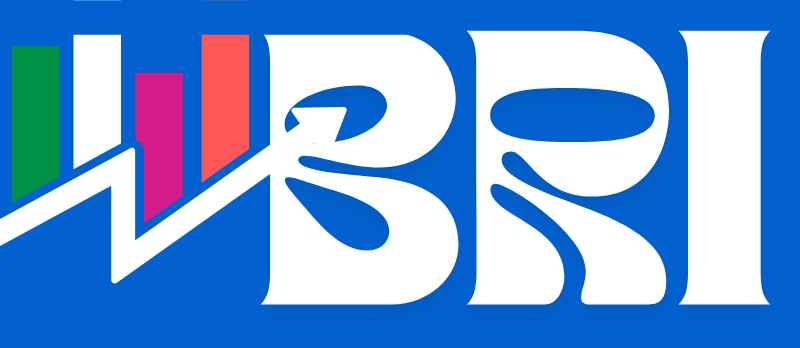
Market Size and Growth
Global Facial Injectables Market size was valued at USD 12.44 Billion in 2025 and is expected to reach USD 38.1 Billion by 2034, at a CAGR of 11.93% during the Forecast period 2025-2034.
Facial Injectibles Market Overview
Rising beauty awareness, changing beauty norms, and technological advancements in non-invasive procedures are propelling the global dermal fillers market into an era of explosive expansion. Customers and clinics are driving demand for longer-lasting, safer, and highly personalized cosmetic interventions.
Facial Injectibles Market Growth Factors and Dynamics
- An increasing consciousness of aesthetics, and then growth in trends of being non-invasive, is propelling growth in the market: There is a rising demand for non-invasive aesthetic or cosmetic treatments and youthfulness at all stages of life. Dermal fillers offer quick recovery times and immediate results, which are driving demand as an alternative to traditional surgery. Furthermore, social media’s influence has made cosmetic aesthetic treatments commonplace the demand for facial rejuvenation, lip enhancement, and wrinkle reduction is being made by younger consumers millennials and Gen Z. This demographic transformation, combined with the increasing popularity of aesthetic treatments among men, is driving the market for dermal fillers to mainstream beauty and wellness routines.
- Innovation in Filler Material and Injection Method Increases Safety and Outcomes: Advances in filler materials—including hyaluronic acid (HA), calcium hydroxylapatite (CaHA), poly-L-lactic acid (PLLA), and polymethylmethacrylate (PMMA)—are providing longer-lasting, more natural outcomes with enhanced biocompatibility. Moreover, developments in micro-cannula technology and AI-powered facial mapping provide accuracy in treatment and minimal side effects. Hybrid fillers that integrate the advantages of several materials are being provided by companies as well. These developments are enhancing customer trust, compelling clinics to broaden their aesthetic treatments.
Facial Injectibles Market Restraints
- Lack of Regulation, Misuse, and Side Effects Are Worrisome: Barring increasing popularity, side effects such as allergic reactions, granulomas, and vascular occlusion are still a problem. In less strong regulatory environments, unregulated practitioners and illegal fillers exacerbate the patient safety factor. All this leads to diminished consumer confidence in some markets due to inconsistency of results resulting from variability of practitioners’ skills and increased risk of litigation, along with increased government control.
- Limited insurance coverage and high cost restrict access: Treatment with dermal fillers continues to be an optional expense that can cost hundreds or thousands of dollars per treatment session, depending on the filler used and the site treated. Health insurance companies generally categorize them as cosmetic and do not cover them. This restricts access for middle-class individuals in developed and emerging markets. Seasonal fluctuations in demand and economic recessions constrain consistent market growth further.
Facial Injectibles Market Opportunities
- Growing MedSpa and Dermatology Clinic Network Provides Scalable Demand: Growth in MedSpas and dermatology-clinic-based aesthetic clinics in metropolitan and suburban areas is increasing access to dermal filler treatments for patients. The centers, commonly operated by qualified aestheticians or dermatologists, provide combination services like Botox, laser treatment, and chemical peels along with fillers. Clinics are investing in membership programs, digital consultations, and training to hold on to customers, unlocking recurring revenue streams. The increasing incidence of aesthetic centers in emerging regions offers a bountiful market opportunity.
- Product Portfolio Diversification and Targeted Fillers Drive Growth: The market trend is towards product differentiation according to facial zones and treatment goals. Specifically formulated fillers for fine lines, deep wrinkles, lip augmentation, or cheek definition enable practitioners to achieve procedures with greater specificity. This zone-specific procedure, combined with pre-filled syringes and long-acting formulations, is improving procedural efficacy and customer satisfaction. Combination treatments of neurotoxins and dermal fillers are also becoming popular for whole-face rejuvenation.
Facial Injectibles Market Trends
- Male Grooming and Influencer-Driven Marketing Open New Segments: Social media personalities and celebrities are changing beauty standards, making dermal fillers increasingly desirable and acceptable. With influencers openly sharing their cosmetic histories, consumers increasingly see aesthetic upgrades as part of self-care. At the same time, male consumers are joining the dermal filler market, desiring subtle increases in jawline definition, hollows under the eyes, and nasolabial folds. Clinics are reacting with campaigns targeting males, tailored filler formulations, and unobtrusive service offerings.
- Sustainability, Vegan Fillers, and AI Tools Redefine Industry Norms: Consumers are showing a preference for vegan, cruelty-free, and eco-conscious products, prompting companies to invest in sustainable production and ethical sourcing of ingredients. Biodegradable and plant-derived fillers are gaining attention. Moreover, the use of AI-based facial analysis tools in consultations is helping practitioners plan treatments more accurately, predict outcomes, and optimize filler volume. These tech-driven and ethically aligned innovations are redefining consumer loyalty and clinic competitiveness.
Facial Injectibles Market Segmentation Analysis
Hyaluronic acid (HA)-based fillers lead worldwide dermal filler sales. HA is generally favored for its natural human body compatibility, reversibility, and high hydration potential. It is widely utilized in lip augmentation, correction of nasolabial folds, and cheek augmentation. The versatility of the material in various facial areas, low downtime, and FDA approval for several indications make it superior to rival fillers. Large players continue to roll out sophisticated cross-linked HA formulations with enhanced duration and elasticity. With aesthetic treatments becoming increasingly mainstream across all ages, HA is the standard bearer in non-surgical facial rejuvenation.
Report Scope
| Feature of the Report | Details |
| Market Size in 2025 | USD 648.23 Million |
| Projected Market Size in 2034 | USD 2131 Million |
| Market Size in 2024 | USD 629.54 Million |
| CAGR Growth Rate | 12.97% CAGR |
| Base Year | 2024 |
| Forecast Period | 2025-2034 |
| Key Segment | By Ingredient, Product Type and Region |
| Report Coverage | Revenue Estimation and Forecast, Company Profile, Competitive Landscape, Growth Factors and Recent Trends |
| Regional Scope | North America, Europe, Asia Pacific, Middle East & Africa, and South & Central America |
| Buying Options | Request tailored purchasing options to fulfil your requirements for research. |
Facial Injectibles Market Regional Analysis
North America continues to be the biggest market for facial injectables with a high density of qualified professionals, high consumer education, and broad insurance coverage of some therapies. The U.S. has led the way with the early adoption of newer injectables and the increasing acceptance of them by men and the elderly.
Europe is close behind, particularly in aesthetic centers such as Germany, France, and the UK, where HA and botulinum toxin products are widely accepted. In contrast, Asia-Pacific is becoming a high-growth area, driven by growing beauty awareness, affordability, and increasing K-beauty influence. Regions such as South Korea, China, and India are experiencing strong market growth, with local product development and increasing MedSpa penetration.
Facial Injectibles Market SWOT Analysis
- Strengths: Immediate results, growing aesthetic consciousness, non-invasive treatments, and extensive product selection fuel strong demand.
- Weaknesses: Adverse reaction risk, abuse through misuse by untrained personnel, and procedural expense restrict access.
- Opportunities: Converging global beauty trends, social media, targeted filler products, and MedSpa expansion create new opportunities.
- Threats: Regulatory issues, illicit product distribution, risk of litigation, and economic sensitivity can impede growth regularly.
List of the prominent players in the Facial Injectables Market:
- AbbVie Inc.
- Ipsen Pharma
- Medytox Inc.
- Merz Pharma GmbH & Co. KGaA
- Revance Therapeutics Inc.
- Galderma S.A.
- Sinclair Pharma
- Anika Therapeutics, Inc
- Suneva Medical Inc.
- Prollenium Medical Technologies Inc.
- Teoxane SA
- Croma-Pharma GmbH
- Bloomage Biotechnology Corporation Limited
- BioPlus Co. Ltd.
- Alphaeon Corporation
- Others
The Facial Injectables Market is segmented as follows:
By Product
- Collagen & PMMA Microspheres
- Botulinum Toxin Type A
- HA
- CaHA
- PLLA
- Others
By End User
- MedSpa
- Dermatology Clinics
- Hospitals
By Application
- Facial Line Correction
- Lip Augmentation
- Face Lift
- Acne Scar Treatment
- Lipoatrophy Treatment
- Others
Regional Coverage:
North America
- U.S.
- Canada
- Mexico
- Rest of North America
Europe
- Germany
- France
- U.K.
- Russia
- Italy
- Spain
- Netherlands
- Rest of Europe
Asia Pacific
- China
- Japan
- India
- New Zealand
- Australia
- South Korea
- Taiwan
- Rest of Asia Pacific
The Middle East & Africa
- Saudi Arabia
- UAE
- Egypt
- Kuwait
- South Africa
- Rest of the Middle East & Africa
Latin America
- Brazil
- Argentina
- Rest of Latin America
[embedsocial_reviews id=”d4ae80cffae3d938f997111953699a733c8e6f99″]
